This article highlights three-step prompting techniques aimed at enhancing learning for children, especially those with autism. It’s all about personalized strategies that make a real difference! By breaking tasks into manageable steps and incorporating visual supports, we can significantly boost skill development. This not only empowers children but also supports caregivers in the learning journey.
Imagine the relief of seeing your child grasp a new concept or skill! These strategies create a sense of achievement for everyone involved. As we explore these techniques, let’s remember that we’re in this together. We’re here to help you every step of the way!
So, if you’re looking to enrich your child’s learning experience, consider how these prompting strategies can fit into your routine. Let’s explore this together!
The journey of learning is as unique as each child, especially for those navigating the complexities of autism. At the heart of effective education is the art of prompting—an essential strategy that not only enhances understanding but also fosters independence. This article dives into three powerful prompting techniques that can truly transform a child's learning experience. Let’s explore how tailored approaches can empower both educators and caregivers!
How can these methods bridge the gap between instruction and comprehension? By ensuring that every child thrives in their educational journey, we can create a supportive environment where learning flourishes. We’re here to help you every step of the way!
At Rori Care, we truly believe in the power of 3 step prompting strategies in ABA therapy. These strategies are all about meeting the unique needs of each child, creating engaging educational experiences that make learning feel exciting and personal. When prompts are tailored, kids not only grasp tasks better but also feel empowered to actively participate in their education. One key technique we use is the complete physical prompt, where we gently guide children through tasks to help them acquire new skills. Plus, understanding the prompt hierarchy—from full physical assistance to subtle cues—allows our clinicians to effectively support skill development.
At Rori Care, our dedication to individualized, data-driven autism care is exemplified through our use of 3 step prompting as a core part of what we do. Research indicates that these tailored approaches significantly boost skill development and promote educational equity, making them crucial for positive outcomes in children with autism. It's also essential for caregivers to be educated on ABA principles, as this equips parents with the tools to support their children's learning at home. When caregivers and clinicians work together, it leads to a consistent approach to behavioral support, resulting in better behavioral outcomes and empowered families. Tracking progress clearly and adapting strategies is vital, enabling us to make ongoing adjustments based on each child's unique growth and needs.
Let’s explore this together! Your child's journey is important, and we're here to help you every step of the way!
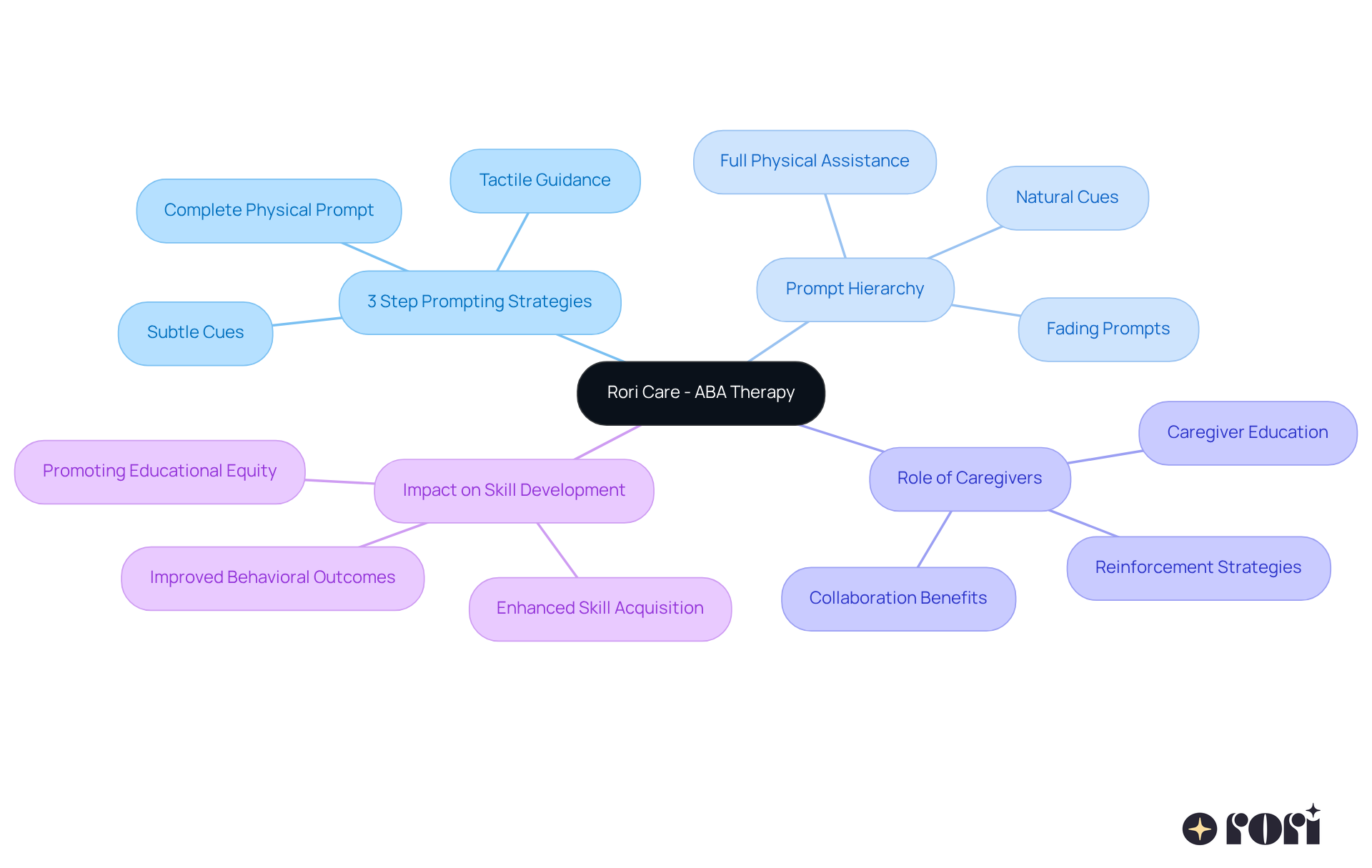
Establishing clear instructions is so important for effective prompting! At Rori Care, our clinical leadership team truly values neurodiversity and is dedicated to helping young individuals thrive. For children with autism, simple and concise directions can make a world of difference, reducing confusion and allowing them to focus on the task at hand.
When instructions are clear, young learners can concentrate on what they need to do rather than trying to figure out what’s being asked of them. This clarity not only helps with understanding but also boosts their confidence, enabling them to engage more fully in their learning activities.
By equipping caregivers with ABA concepts and techniques, we’re enhancing support and empowering informed decision-making. This ultimately leads to better behavioral outcomes and a sense of empowerment for caregivers. Let’s explore this together!
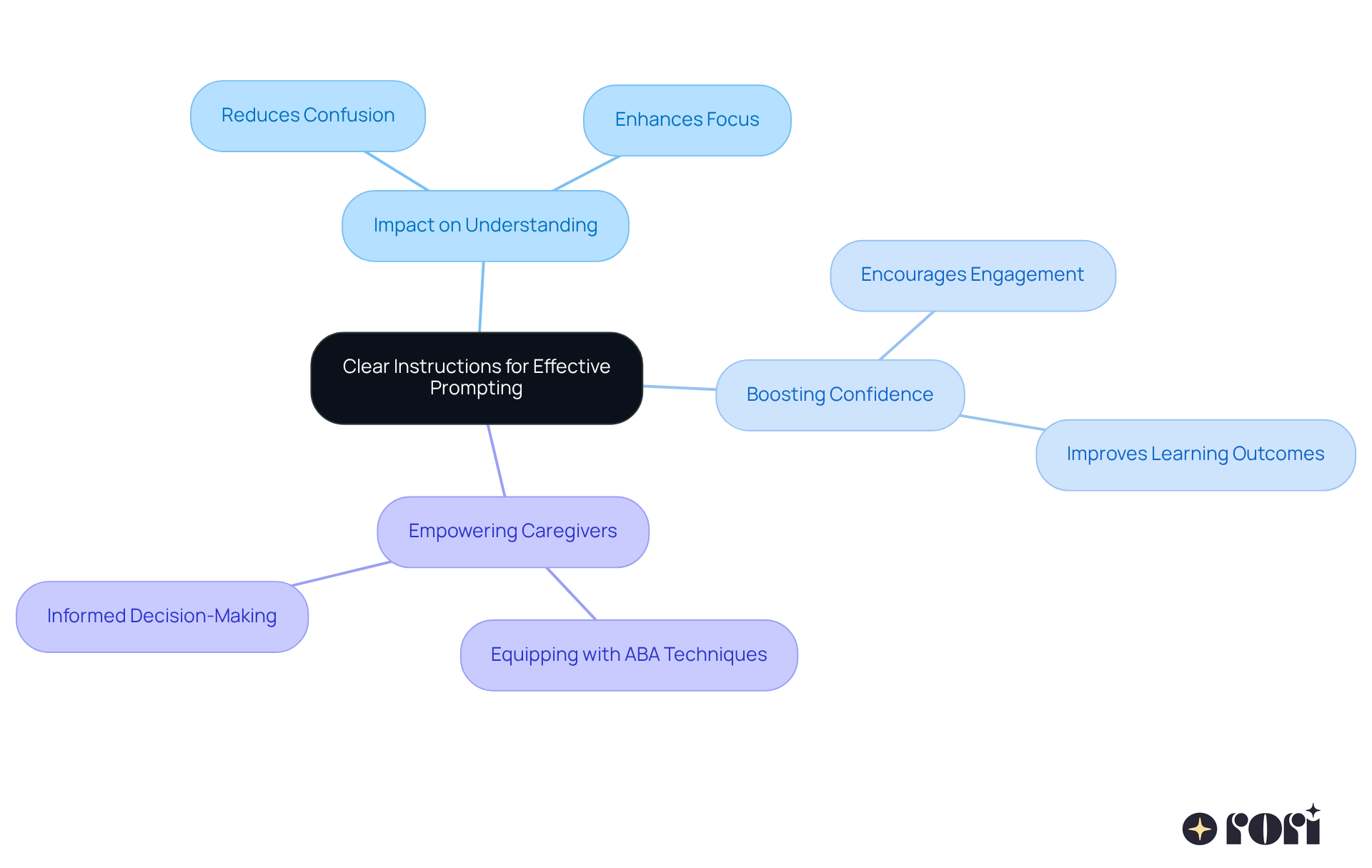
Breaking tasks down into smaller, manageable pieces is a fantastic example of 3 step prompting for teaching complex skills! 🌟 This method allows kids to focus on one step at a time, helping to reduce feelings of overwhelm and frustration. By mastering each little step, they build confidence and competence, leading to better outcomes overall.
This technique utilizes 3 step prompting as a core part of Rori Care's personalized approach to ABA therapy. Let’s explore this together! By making learning feel achievable, we’re here to support you every step of the way!
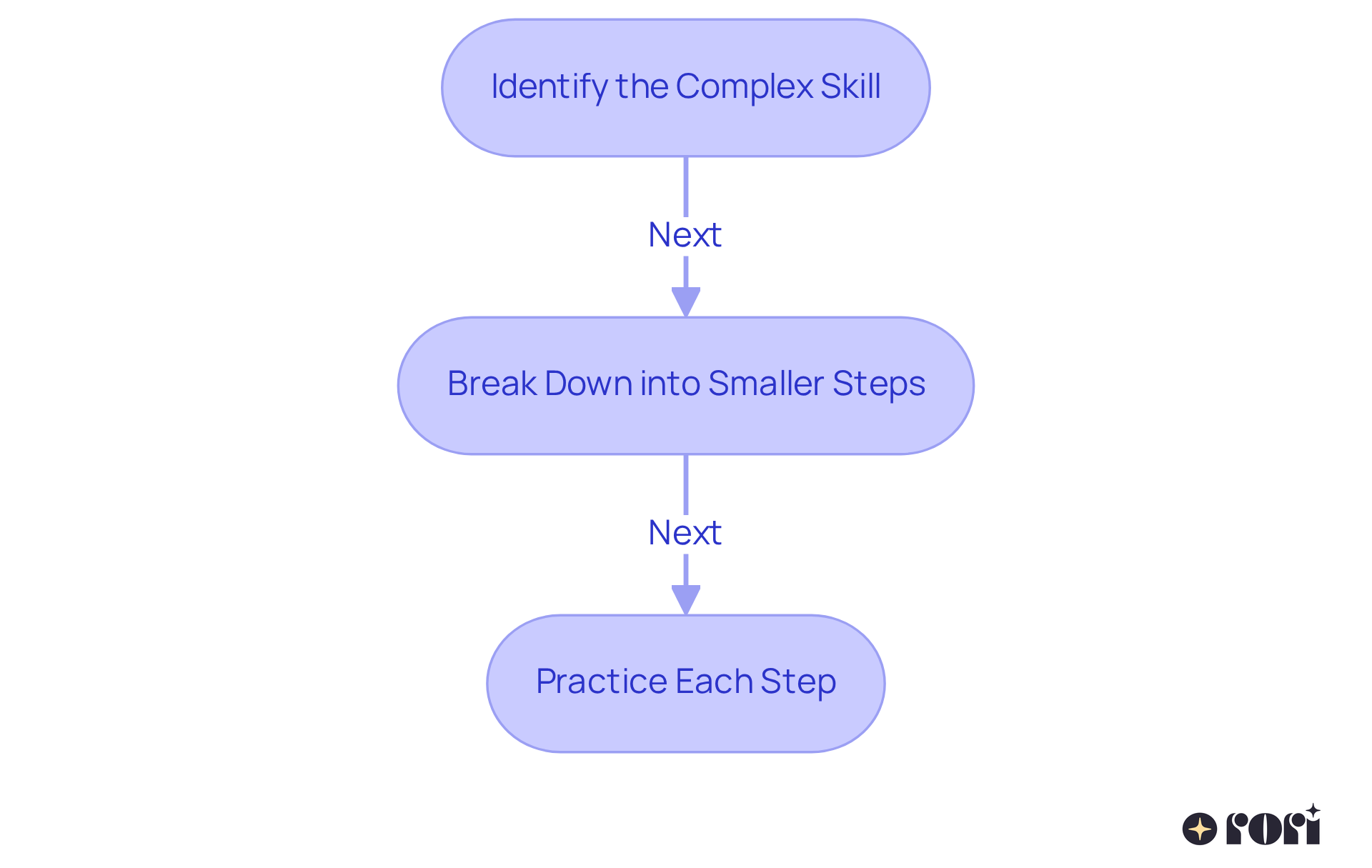
Using visual supports like charts, pictures, or diagrams can really boost how effective prompting techniques are! 🌟 These visual aids give young learners something tangible to reference, helping them grasp and remember instructions better. For example, a visual schedule can be a game-changer, guiding a young person through their daily routines and making transitions feel smoother and more predictable.
This approach aligns beautifully with Rori's commitment to integrating innovative technologies into behavioral therapy. Plus, it empowers caregivers by offering practical resources to support their child’s development. Let’s explore this together! We’re here to help you every step of the way!
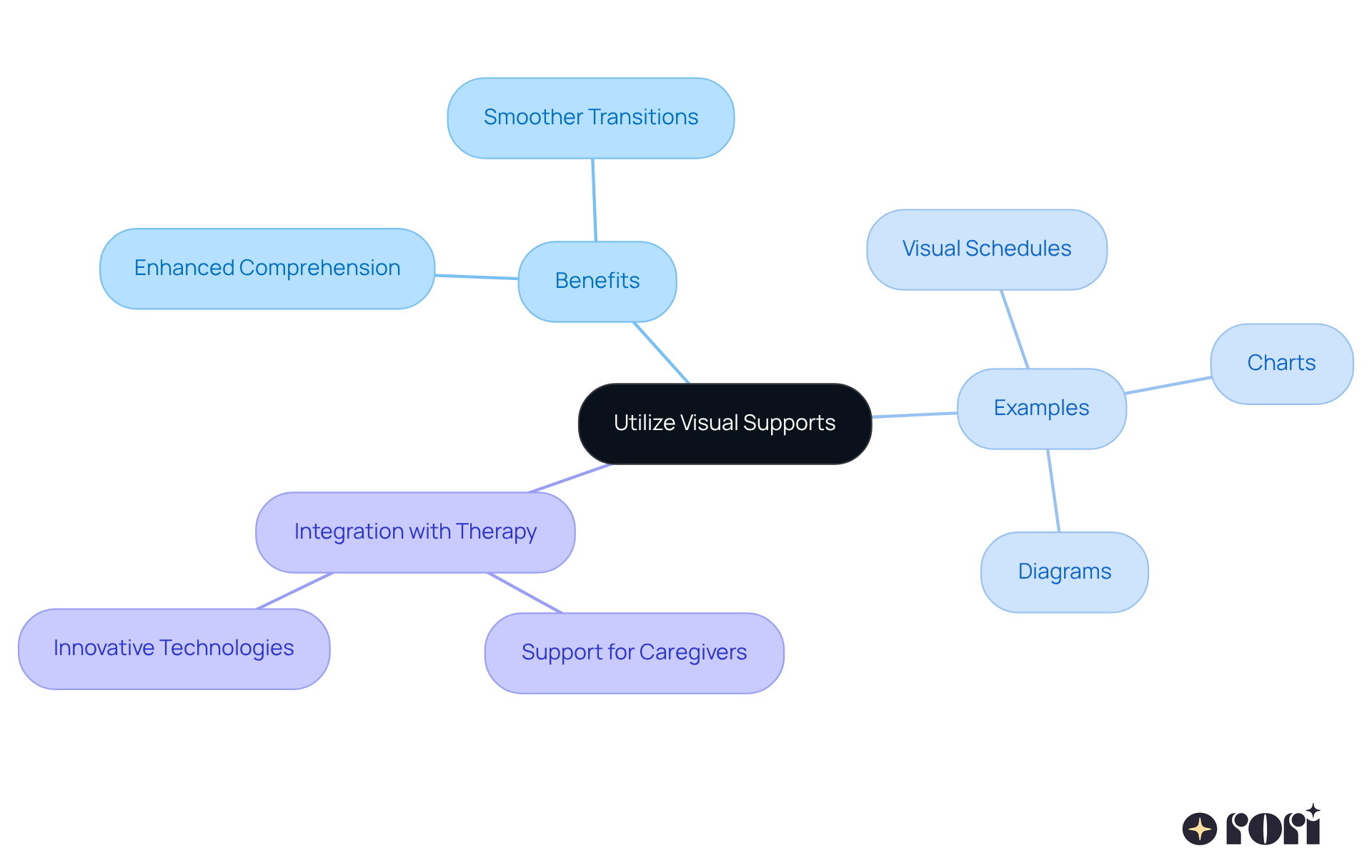
Connecting prompts to real-life scenarios is essential for enhancing a young learner's educational experience. When young learners recognize the significance of their lessons, their involvement and knowledge retention improve significantly. For instance, teaching social skills through role-playing real-life scenarios allows young individuals to practice and understand how to use these skills in everyday interactions.
This contextual approach not only deepens understanding but also aligns with the personalized treatment plans developed by Rori Care - ABA Therapy. By actively involving caregivers in this process, we enhance support and empower them to make informed choices that positively influence their child's progress. 🌟
Research shows that contextual learning can lead to better outcomes for individuals with autism, as it helps bridge the gap between theory and practice. Clinicians emphasize that incorporating real-life contexts into teaching methods boosts engagement and enables young learners to navigate social situations more effectively. Ultimately, this fosters their confidence and independence. Let’s explore this together!
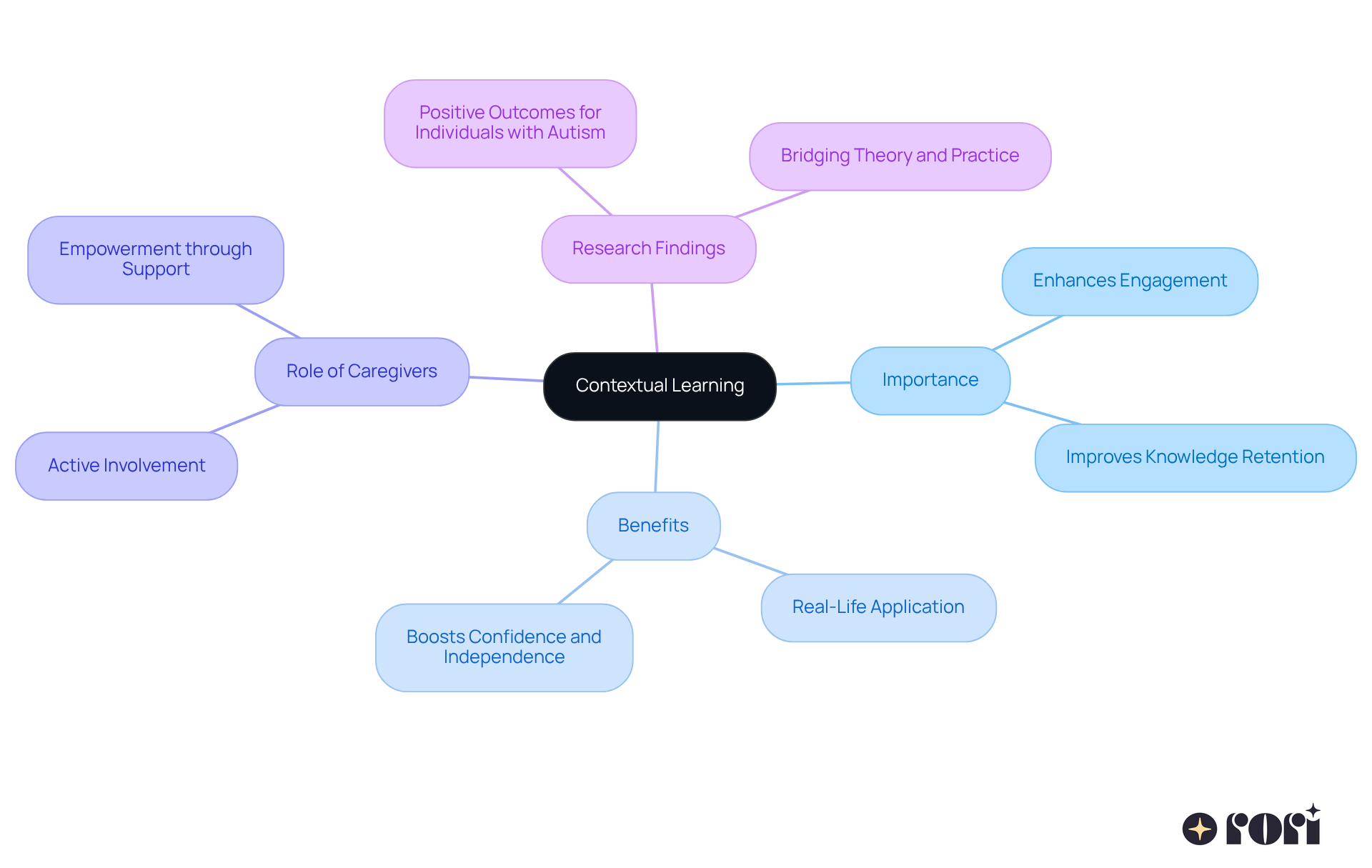
Implementing chain of thought prompting is a fantastic way for young individuals to express their reasoning and thought processes. Not only does this method encourage independent thinking, but it also helps them build important problem-solving skills. By guiding them through a series of questions that lead to their own conclusions, clinicians can really boost cognitive development and self-confidence.
This approach fits perfectly with our data-driven method at Rori Care, which focuses on personalized care. We believe in customized planning and measurable goals tailored to each child's unique needs. Our evidence-based strategies ensure that these prompting techniques are rooted in the latest research, and with ongoing evaluation, we can make adjustments that optimize outcomes.
Through this supportive approach, Rori Care empowers caregivers with ABA principles. This enables them to actively support their children’s behavioral goals through effective involvement and data collection. Let’s explore this together and see how we can make a positive impact!
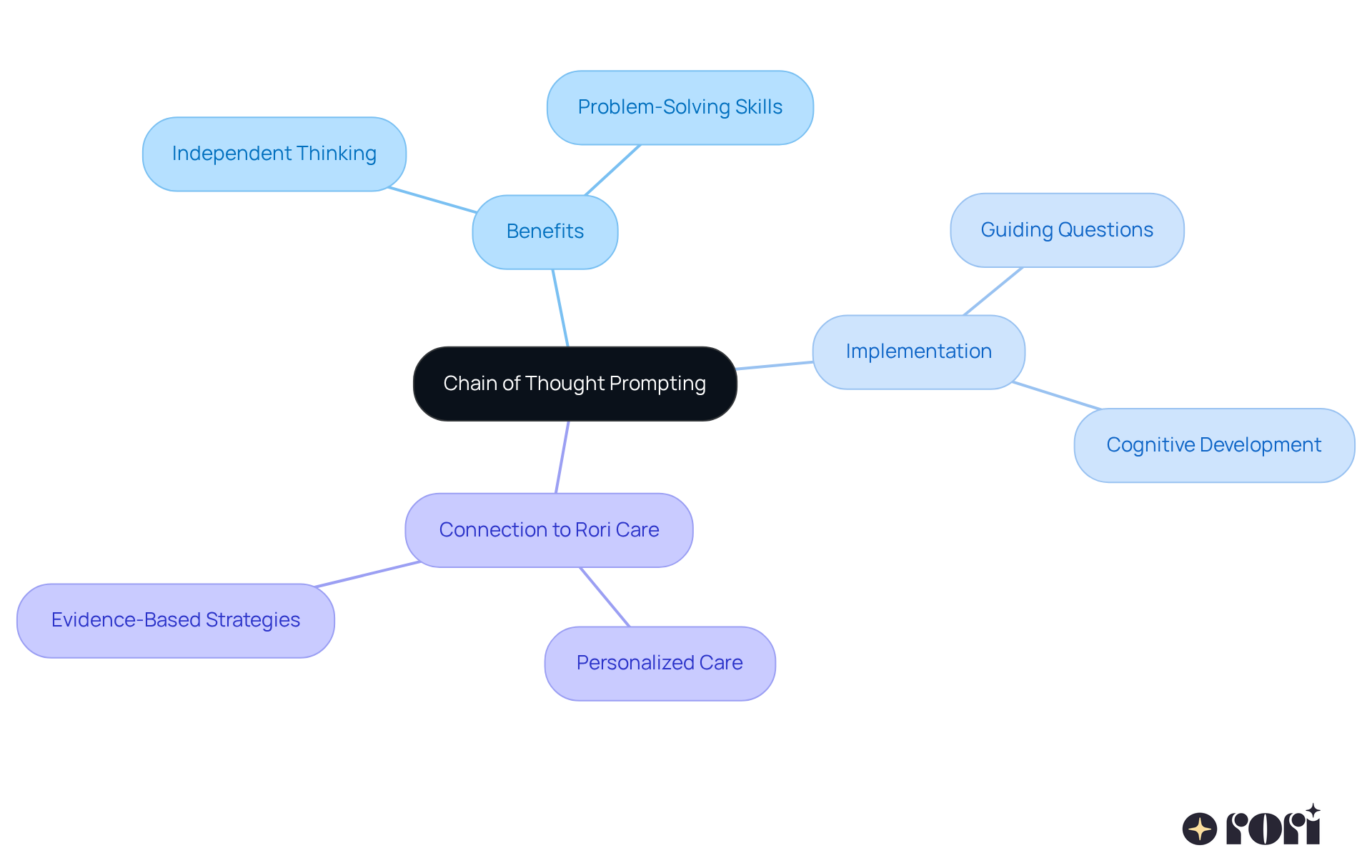
Incorporating feedback into the prompting process is so important for helping young people recognize their progress and pinpoint areas for improvement. Constructive criticism should be specific, actionable, and delivered with a supportive touch to create a positive learning environment. Research shows that prompt and targeted feedback can really boost the emotional well-being and self-worth of young individuals, especially those with autism.
By consistently offering feedback, clinicians can reinforce positive behaviors and guide youth toward better outcomes. This approach not only aids in skill development but also builds confidence, as young individuals learn to navigate social interactions more easily. Effective feedback strategies, like Behavioral Skills Training (BST), highlight the significance of immediate reinforcement during practice, allowing for real-time adjustments that really solidify learning.
This practice aligns perfectly with Rori's commitment to continuous improvement in therapy, ensuring that every individual receives the personalized support they need to thrive. Let’s explore this together!
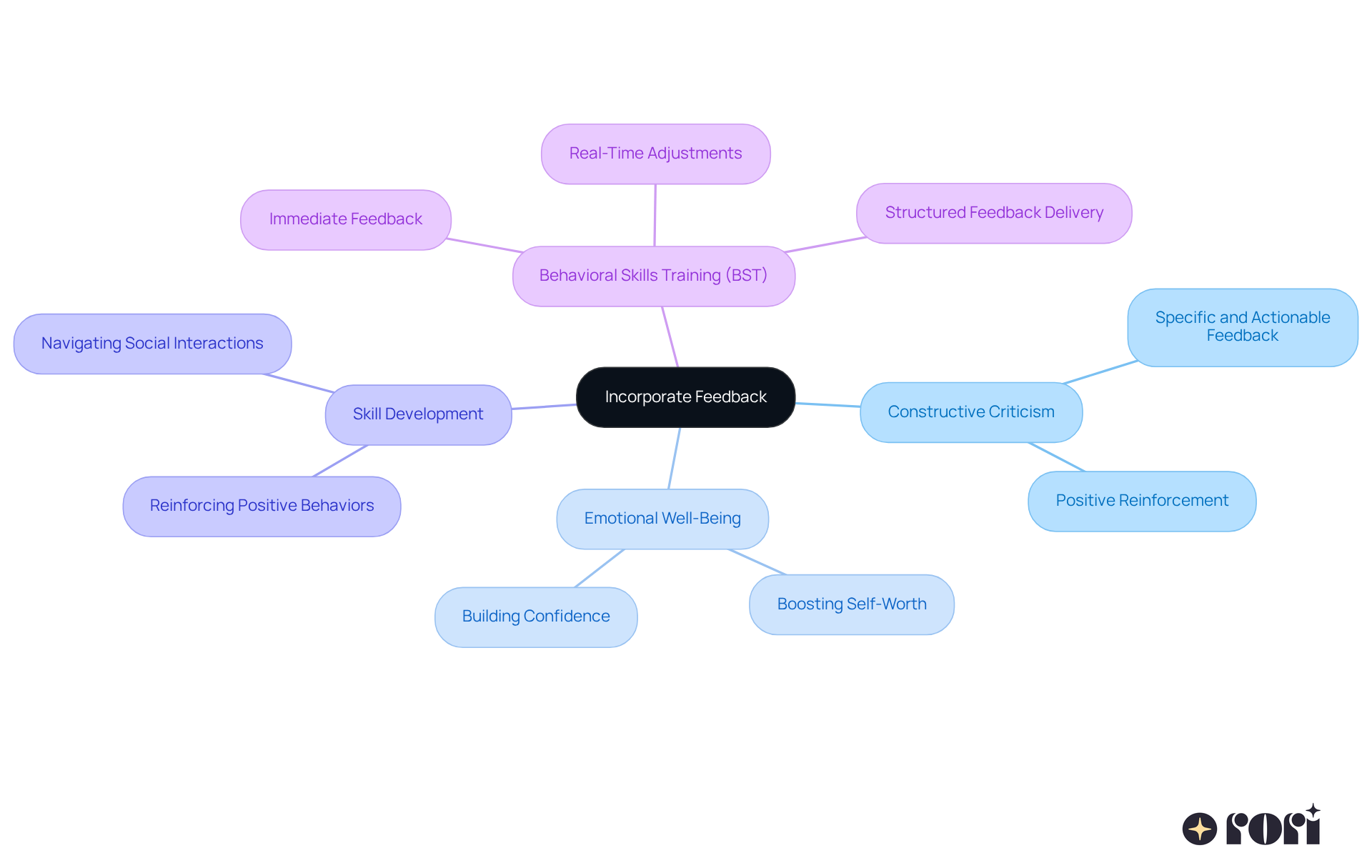
Providing scenario-specific advice allows clinicians to implement 3 step prompting tailored to the unique needs and experiences of each young patient. By utilizing 3 step prompting that considers the interests of the young person, their preferences, and daily routines, clinicians can craft prompts that truly resonate, making engagement and effectiveness soar. This personalized approach is a hallmark of Rori Care's innovative methods in ABA therapy. Here, qualified behavior analysts design individualized plans with measurable goals and evidence-based techniques.
Such customized support not only fosters positive behavior changes and skill acquisition but also empowers caregivers to actively participate in their child’s development. It’s all about ensuring that the strategies applied are responsive to the individual’s evolving needs. Let’s explore this together! We’re here to help you every step of the way!
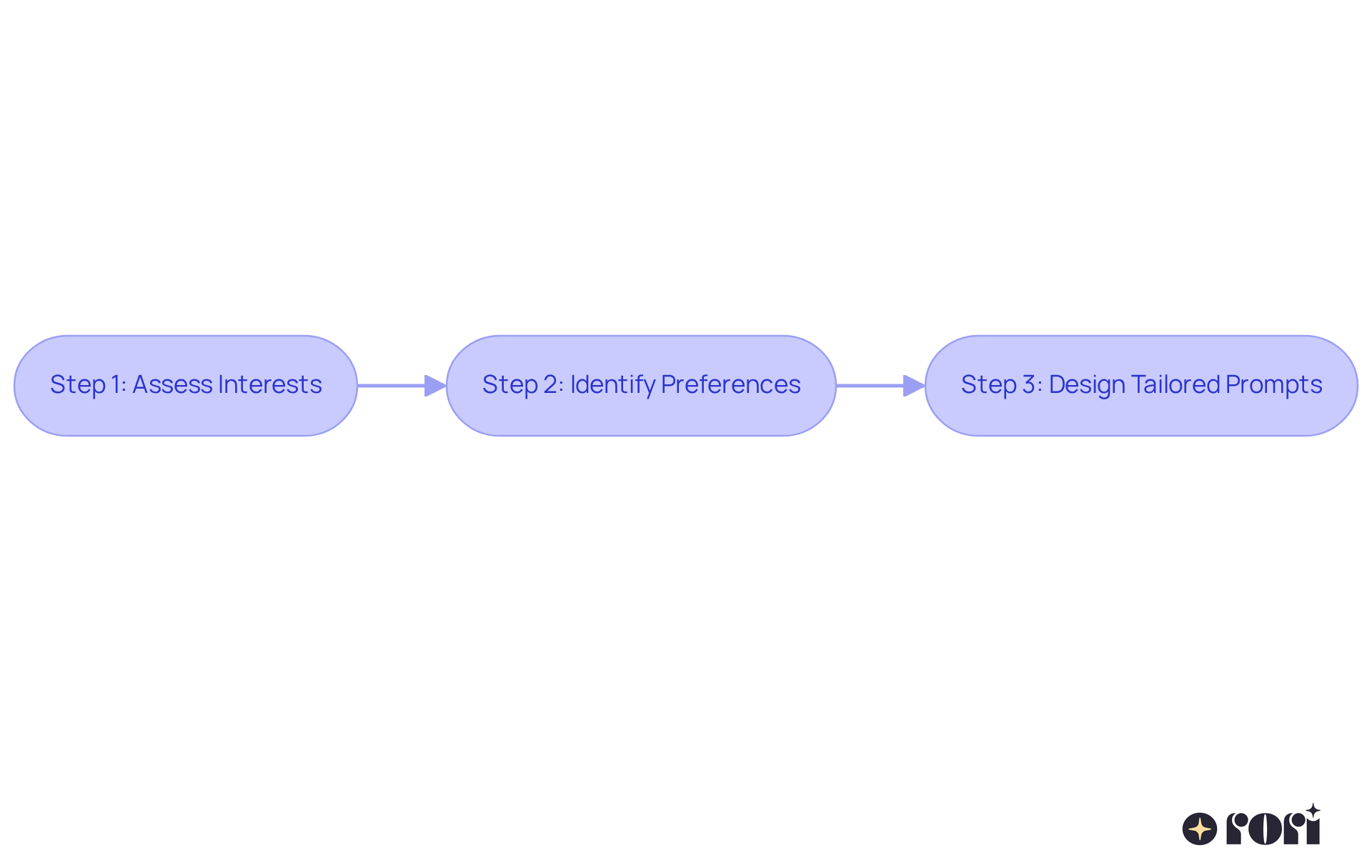
Using few-shot education can really boost understanding, especially for our kids who may need a little extra help. Imagine being able to grasp new ideas with just a few examples! This approach works wonders for children with autism, ADHD, behavioral challenges, and learning disabilities. Instead of going through lengthy lessons, they benefit from clear and concise instruction that gets straight to the point.
When clinicians present key concepts in a simple and direct way, it helps kids understand and remember faster. This aligns perfectly with Care's focus on data-driven therapy. It’s all about personalizing the learning experience! By setting measurable goals and continuously assessing progress, we can ensure that each child’s unique needs are met with evidence-supported methods.
At Rori Care, our clinical leadership team is passionate about promoting neurodiversity and supporting the success of our youth. This approach is a crucial part of our behavioral intervention services. Let’s explore this together! We’re here to help you every step of the way!
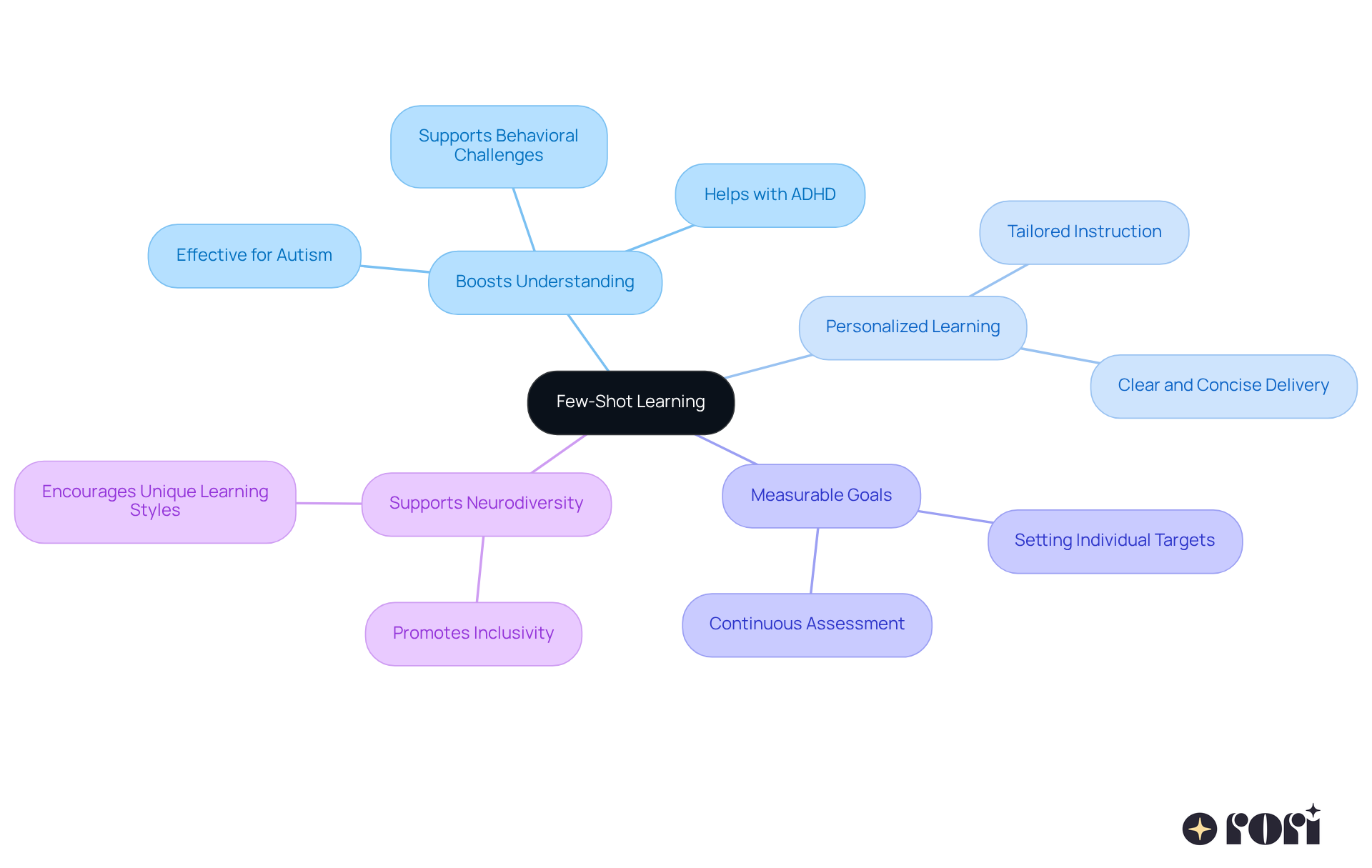
Evaluating and adjusting the 3 step prompting strategies is so important for keeping ABA therapy effective. Regular evaluations utilizing 3 step prompting help practitioners figure out what works best and identify areas that need a little tweaking. This flexibility ensures that interventions meet the changing needs of each individual, which is essential for providing high-quality, personalized care—a core principle at Rori Care - ABA Therapy.
Their commitment to empowering youth and families shines through in how they continually improve strategies based on ongoing progress assessments. Did you know that significant advancements are seen in 90% of individuals when the suggested hours are fully carried out with active caregiver participation? By blending quantitative data with qualitative insights, clinicians can gain a deeper understanding of each young person's development.
Family involvement is a game-changer, reinforcing learned skills at home and boosting the overall effectiveness of therapy. Using standardized assessments like VB-MAPP and ABLLS allows clinicians to track progress accurately, ensuring that therapy stays aligned with each individual's unique needs. Plus, the automatic data collection during sessions means the clinical team is always available for your dependent without interrupting the flow of therapy, with all data securely stored and anonymized.
Regular communication between families and therapists encourages collaboration toward shared goals. Tracking milestones can also serve as a motivational tool for both children and parents, inspiring them to embrace new challenges. Let’s explore this journey together!
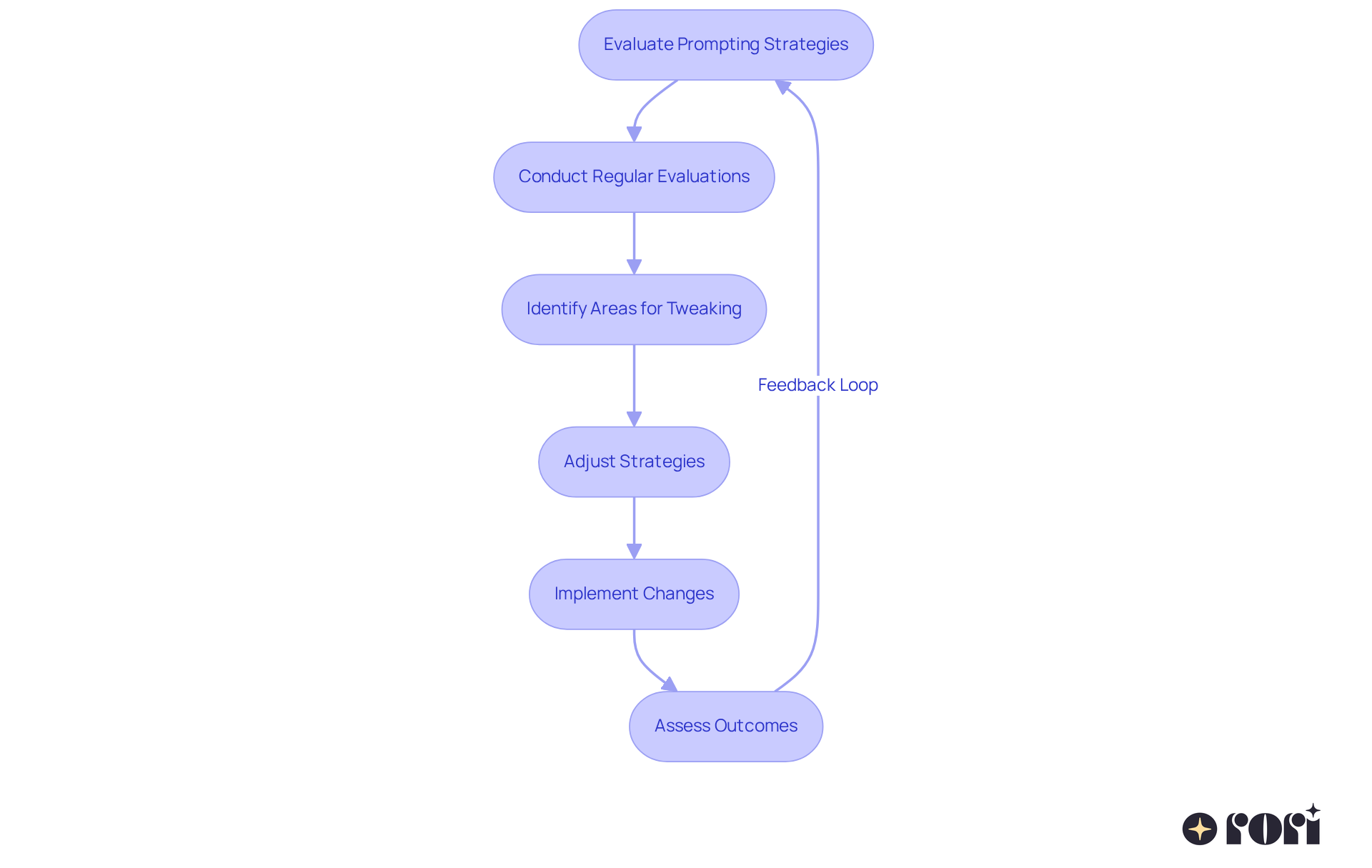
The three-step prompting techniques we’ve talked about are truly essential for enhancing children’s learning experiences, especially within the framework of ABA therapy. By personalizing these strategies to fit each child's unique needs, caregivers and clinicians can create an engaging educational environment. This not only fosters skill development but also encourages active participation. When we focus on tailored approaches, we help children understand better and empower them to take ownership of their learning journey.
Key insights from the article underline the importance of:
Plus, incorporating real-life contexts and encouraging independent reasoning through chain of thought prompting can really enrich the learning process. By committing to ongoing evaluation and adjustment, we ensure these techniques stay effective and responsive to each child's growth.
Ultimately, the significance of these prompting strategies lies in their ability to create a supportive and empowering atmosphere for both children and caregivers. By embracing these techniques, families can foster a collaborative approach to learning that not only enhances educational outcomes but also builds confidence and independence in young learners. Engaging with these methods can transform the educational experience, making it more accessible and effective for children with diverse learning needs. Let’s explore this together! We’re here to help you every step of the way!
What is the focus of Rori Care's ABA therapy?
Rori Care's ABA therapy focuses on personalized prompting techniques that cater to the unique needs of each child, creating engaging educational experiences that enhance learning.
What are the key techniques used in Rori Care's prompting strategies?
One key technique is the complete physical prompt, where clinicians gently guide children through tasks. The prompt hierarchy, ranging from full physical assistance to subtle cues, is also utilized to support skill development.
How does Rori Care ensure effective learning for children with autism?
Rori Care uses 3 step prompting strategies that are tailored to each child's needs, which significantly boosts skill development and promotes educational equity.
Why is it important for caregivers to understand ABA principles?
Educating caregivers on ABA principles equips them with the tools to support their children's learning at home, leading to a consistent approach to behavioral support and better outcomes.
How does Rori Care track progress in children's learning?
Rori Care tracks progress clearly and adapts strategies based on each child's unique growth and needs, ensuring ongoing adjustments for optimal learning.
What role do clear instructions play in effective prompting?
Clear instructions reduce confusion for children with autism, allowing them to focus on tasks and boosting their confidence, which enhances engagement in learning activities.
How does breaking tasks down benefit children in therapy?
Breaking tasks down into smaller, manageable pieces helps children focus on one step at a time, reducing feelings of overwhelm and frustration, and leading to better overall outcomes.
What is the overall goal of Rori Care's approach to ABA therapy?
The overall goal is to make learning feel achievable and to support children and their families every step of the way in their educational journey.